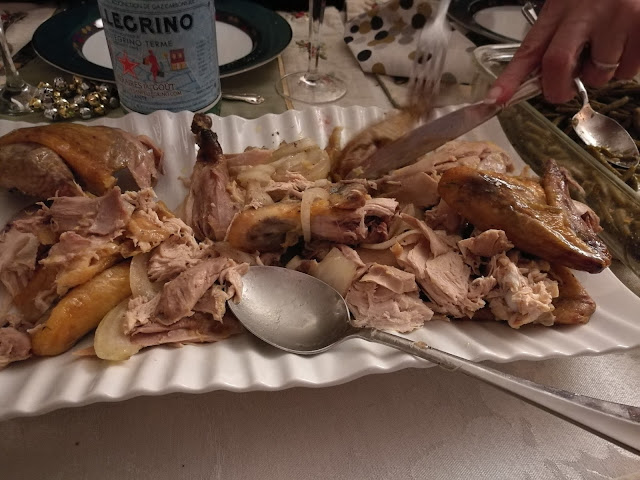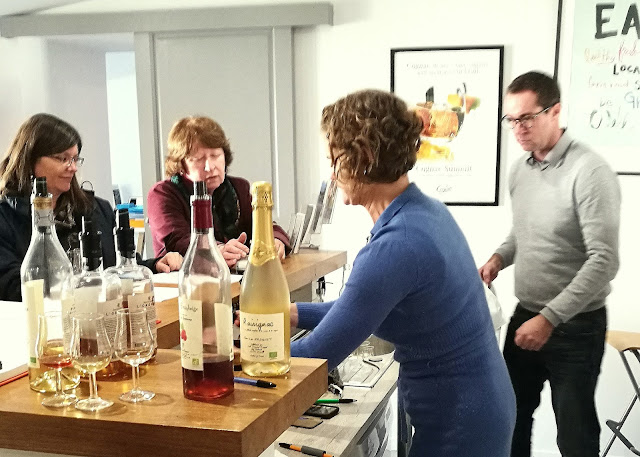Christmas in France
For us Christmas is France is about blending traditions. For me, it's passing down my American traditions and adding the French ones. Now, honestly many of these Christmas traditions are very similar but other traditions in France are definitely unique to this country.
If you follow this blog - earlier this month - I shared about the French Christmas Market in Bordeaux and the Holiday Lights of the Season.
Trimming the tree is still a family event in my house. In France, many families have small trees, either real or artificial. I think this is more common due to the smaller apartments and houses. My girls have always wanted a larger tree, I think due to their American roots and childhood. Our first couple of years here, it was very hard to find a nice size tree, so we had one that was only about 4.5 feet tall. The girls were a bit miffed and often wanted to refer to it as a Charlie Brown Christmas tree.
This year, we have an artificial one that stands more than 6 feet tall. Due to the high ceilings in the house, this works really nicely. Since it's artificial, we will enjoy it for many years to come. Happy to have finally found a solution where everyone is happy.
Pere Noel:
In France the young children believe in Pere Noel, just like Santa Claus. Like in the US, children will even write and send letters with their requests and desires. Interestingly enough, France's "North Pole" is the town of Libourne (30 minutes East of Bordeaux) where letters from all over France arrive and are personally answered by Postal employees each season.
Although, I have found it interesting that in France the average age for a child to stop believing in Pere Noel is around 6 years old. It seems that once they stop believing then all their gifts are just from family. For me this is a bit sad, as Pere Noel is part of the magic of the holiday season.
I enjoy celebrating the magic of Christmas and even my older girls get gifts from Pere Noel. It's the time of year to be generous and full of surprises, so it's always fun to mark a few highly desired gifts from Pere Noel in my house.
France is not short on decorating for the holidays or even similar to the States places where children can have their photos taken with Pere Noel. In fact, there are often special celebrations the weekends in December up until Christmas where Pere Noel will arrive in a town to bring special wishes and of course candy and chocolate for the children. This just depends on the town where one lives. I remember once years ago, watching Pere Noel arrive into the village celebration via a construction crane. He wished everyone a Joyeux Noel and gave candy to the children.
Towns are often highly decorated and will often have Winter activities happening the weekends before Christmas. These often include music with musicians dressed in Santa costumes, Winter activities, Children's activities and often sampling of holiday treats and chocolate. My town, Pessac often has this, including a chocolate fountain where people can sample bananas or marshmallows dipped in the chocolate. Yum!!
Holiday meal on December 24
This is one of the biggest traditions in France that we have more than willingly adopted. The French eat their holiday meal on the evening of the 24th instead of the 25th and it's often accompanied by some very traditional foods. Each family and each region vary a bit but in general its a multi course meal. Here are some of the traditional foods enjoyed on this evening:
Fois Gras served with Sauternes wine
Oysters - served fresh open on the half-shell with lemon:
Smoked salmon can be also served
For the main dish it's often - Chicken - A nice Chapron (Castrated chicken so it's bigger and plump) often served with chestnuts on the side. or could also be more seafood this depends on the family.
Cheese platter with a blend of cheeses -and of course a Christmas log - Buche du Noel for dessert - served with Champagne!
Christmas and gifts
Gifts can either be opened on the night of the 24th after the large meal - this could be into the early hours of the 25th. Some families will still go to midnight mass and then return home to open gifts.
Other families, especially with young children will wait to open gifts on the 25th after Pere Noel has arrived....Either way it's a joyous time and full of holiday spirit!
Joyeux Noel to all
May it be full of family, friends and loved ones.
This post is part of the Christmas in Different Lands series in conjunction with - Multi-cultural Kids Blog. You can enjoy other cultural holiday traditions by visiting Multi-cultural Kids Blogs or by the list at the end of this post. Enjoy reading - there are so many fun traditions - world wide for this season!!

Welcome to our fifth annual Christmas in Different Lands series! This year each participating blogger will focus on a different country, sharing a traditional dish and more about Christmas in that country. For even more glimpses of global Christmas celebrations, see our series from previous years (2013, 2014, 2015, and 2016) plus follow our Christmas board on Pinterest!















































